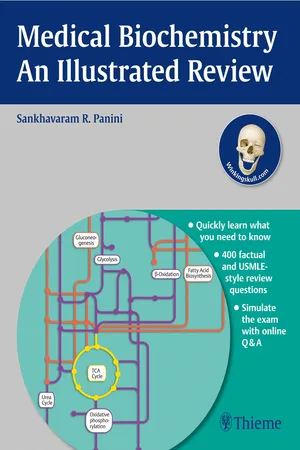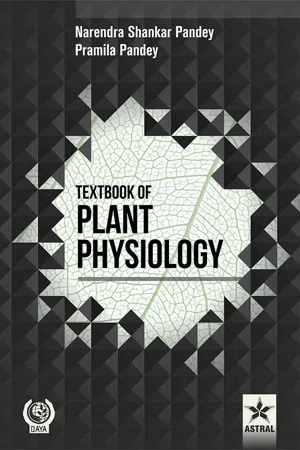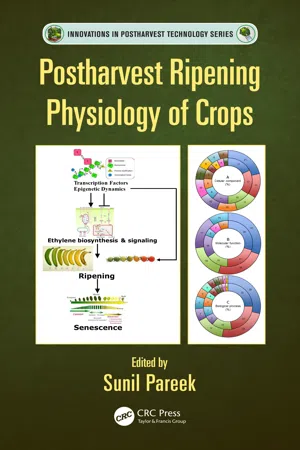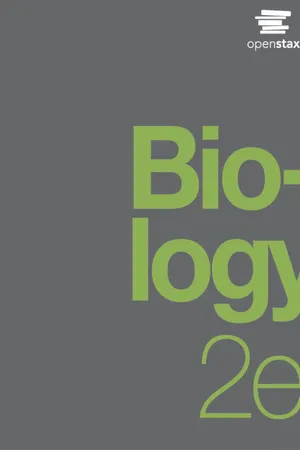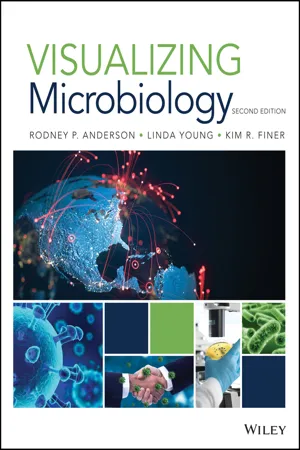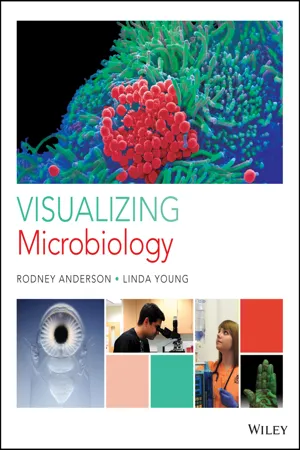Biological Sciences
Aerobic Respiration
Aerobic respiration is the process by which cells convert glucose into energy in the presence of oxygen. It involves a series of chemical reactions that occur in the mitochondria, producing a large amount of adenosine triphosphate (ATP) for cellular energy. The overall equation for aerobic respiration is C6H12O6 + 6O2 → 6CO2 + 6H2O + ATP.
Written by Perlego with AI-assistance
Related key terms
1 of 5
11 Key excerpts on "Aerobic Respiration"
- eBook - ePub
- Wenhao Dai(Author)
- 2019(Publication Date)
- CRC Press(Publisher)
2 . The energy released from respiration is available to the plant in the form of adenosine triphosphate (ATP) that is involved in almost all biological processes in living plant cells.There are four major stages in the Aerobic Respiration process. The first stage is glycolysis in which one 6C-glucose is split into two 3C-pyruvates. Glycolysis occurs in the cytosol and can be seen in all living cells. In plants, glucose is derived from sucrose (12C) and other carbohydrates, such as starch. A series of enzymes are involved in the process of glycolysis (Figure 3.2 ). In glycolysis, ATP is used in two steps at the early stage, while ATP and NADPH are synthesized as the energy being released from the breakdown of the chemical bond. In summary, two molecules of ATP are used for the initial ‘jump start’ of the Aerobic Respiration process and four molecules of ATP and two molecules of NADPH are produced at the later steps; therefore, two molecules of net ATP and two molecules of NADPH can be released from one molecule of glucose in the process of glycolysis.FIGURE 3.2 Steps of glycolysis.Pyruvates generated from glycolysis diffuse from the cytosol to the mitochondrion. In mitochondrion, with the presence of O2 , each of two pyruvates is oxidized into 2C-acetyl coenzyme A (acetyl CoA) during which one NAD+ is reduced to one NADH and one CO2 is released.The tricarboxylic acid cycle (TAC), also called Krebs cycle or citric acid cycle, occurs in the inner mitochondrial matrix. The TAC is an aerobic process. The first step of the TAC cycle is the combination of acetyl CoA (2C) and oxaloacetic acid (OAA) (4C) catalyzed by citrate synthase. The first product of the TAC is a 6C citrate. The second step is to change citrate to iso-citrate followed by a series of chemical reactions that result in the release of CO2 , NADH, and FADH2 . The last step of TAC is to regenerate OAA that is ready to accept another acetyl CoA to continue the TAC. In one step where succinyl-CoA is converted to succinic acid, one molecule of ATP is produced directly from ADP and inorganic phosphate (i.e. substrate-level phosphorylation). In summary, each TAC uses one acetyl CoA, three NADH and one FADH2 , and one ATP were produced and two CO2 - eBook - PDF
- Sankhavaram R. Panini(Author)
- 2013(Publication Date)
- Thieme(Publisher)
112 III Cellular Respiration 8 Principles of Cellular Respiration Cellular respiration is the process by which the energy contained within the bonds of carbohydrates, proteins, and lipids is har-vested and converted into adenosine triphosphate (ATP). The en-ergy stored in ATP is then released upon hydrolysis and used to perform mechanical work (e.g., muscle contraction) or chemical work (e.g., biomolecule synthesis). Cellular respiration depends on the integration of several metabolic pathways that link the breakdown of nutrients to oxidation-reduction (redox) reactions that culminate in the transfer of electrons to O 2 and the phos-phorylation of adenosine diphosphate (ADP) into ATP. A summary of the pathways involved follows ( Fig. 8.1 ): 1. Glycolysis: This cytosolic pathway splits glucose (a six- carbon carbohydrate) into two molecules of pyruvate (a three- carbon compound). In doing so, ATP and a reduced form of nicotinamide adenine dinucleotide (NADH) are produced. (The starting material, glucose, is obtained from the catabo-lism of carbohydrates or from de novo synthesis via gluco-neogenesis.) 2. Decarboxylation of pyruvate: Under aerobic conditions, pyruvate is transported into the mitochondria, where it is converted (via decarboxylation) to acetyl coenzyme A (CoA) in a reaction that produces NADH. Fig. 8.1 ▶ Cellular respiration In cellular respiration, four important metabolic pathways function to harvest the energy contained within the bonds of carbohydrates, proteins, and lipids and convert it to adenosine triphosphate (ATP). Those metabolic pathways are (1) glycolysis, (2) decarboxylation of pyruvate, (3) tricarboxylic acid (TCA) cycle, and (4) oxidative phosphorylation. The degradation of carbohydrates and the de novo synthesis of glucose (gluconeogenesis) supply the glucose. The degradation of lipids and proteins, as well as the metabolism of glucose, supply acetyl coenzyme A (CoA). - eBook - PDF
- Pandey, Narendra Shankar(Authors)
- 2021(Publication Date)
- Daya Publishing House(Publisher)
Chapter 5 : Respiration Cellular respiration consists of a series of pathways by which carbohydrate and other molecules are oxidized for the purpose of retrieving the energy stored in photosynthesis and to obtain carbon compound used in the growth and maintenance of the cell. Higher plants are aerobic organisms, which means they require the presence of molecular oxygen for normal metabolism. They obtain both energy and carbon by oxidizing photoassimilates aco- ording to the following overall equation: From chemical reaction, plant respiration can be expressed as the oxidation of the hexose to carbon di-oxide, with water as the product. Respiration is accompanied by the release of an amount of free energy. Respiratory Quotient (RQ) R.Q. is the ratio of the volume of the carbon dioxide released to the volume of oxygen taken in respiration in the given period of time at standard temperature and pressure. The value of R.Q. varies with the respiratory substrates and their oxidation. R.Q. of carbohydrate, The respiration reactions can be grouped into four major processes: 1. Glycolysis, 2. Citric acid cycle, 3. Pentose phosphate pathway, and 4. Oxidative phosphorylation This ebook is exclusively for this university only. Cannot be resold/distributed. 5.1 Glycolysis In the early steps of glycolysis (from the Greek words glykos , “sugar,” and lysis , “splitting”), carbohydrates are converted to hexose phosphates, which are then split into two triose phosphates. In a subsequent energy-conserving phase, the triose phosphates are oxidized and rearranged to yield two molecules of pyruvate, an organic acid. Besides preparing the substrate for oxidation in the citric acid cycle, glycolysis yields a small amount of chemical energy in the form of ATP and NADH. When molecular oxygen is unavailable–for example, in plant roots in fooded soils–glycolysis can be the main source of energy for cells. - eBook - PDF
- Sunil Pareek(Author)
- 2016(Publication Date)
- CRC Press(Publisher)
141 R E S P I R A T O R Y M E T A B O L I S M to capture reducing power (e.g., in NADH), and to produce small carbon fragments from which more complex molecules can be synthesized. In the presence of adequate levels of oxygen, the three sequential respiratory reactions are glycolysis (i.e., the lysing of glucose to produce pyruvate), the tricarboxylic acid cycle (i.e., the decarboxylation of pyruvate to CO 2 and production of high-energy compounds, e.g., NADH), and electron trans-port (i.e., generation of ATP from high-energy compounds by chemiosmotic phosphorylation). An offshoot of glycolysis, the pentose-phosphate shunt diverts and reconfigures intermediates from glycolysis into substrates for subsequent synthetic reactions (e.g., produces the 5-carbon ribose sugars used in RNA and DNA synthesis). In the absence of oxygen, NAD + regener-ated during anAerobic Respiration allows glycolysis to continue to extract a portion of the energy contained in the glucose molecule. Biological energy is stored and released through redox reactions. Respiratory metabolism involves the transfer of energy in a substrate mol-ecule (e.g., glucose) through the extraction and movement of electrons. Redox (shorthand for reduction–oxidation reactions) involves a coupled reaction where electrons are gained by a molecule (i.e., it is reduced) while another molecule is oxidized (i.e., it loses electrons). In aerobic respira-tion (i.e., in the presence of adequate oxygen), glucose is oxidized (i.e., it furnishes high-energy electrons) and some of the energy in the electrons is extracted in the production of ATP as they pass through a number of enzymatically controlled steps, until they finally reduce oxygen to water (i.e., transfer the electrons, with the accompanying protons, to oxygen). - Cecie Starr, Christine Evers, Lisa Starr, , Cecie Starr, Cecie Starr, Christine Evers, Lisa Starr(Authors)
- 2020(Publication Date)
- Cengage Learning EMEA(Publisher)
●●● ● Describe glycolysis in terms of energy. Overview of the Pathways Plants, algae, and other autotrophs harvest energy directly from the environment, and convert it to chemical bond energy of sugars (Section 5.2). They and all other organisms use energy in the bonds of sugars to power the various energy-requiring reactions that sustain life (Section 4.3). However, in order to use the energy stored in sugars, cells must first transfer it to molecules—especially ATP—that can partici- pate directly in these reactions. Cells harvest energy from glucose by breaking its carbon backbone, one bond at a time. This releases the energy of the molecule stepwise, in small increments that can be captured for cellular work. A number of different pathways drive ATP synthesis by breaking the bonds of glucose this way. Some of these pathways involve electron transfer chains, and others do not, but all are ancient. Aerobic Respiration Cellular respiration uses electron transfer chains to make ATP, and in many modern organisms the process is aerobic. Aerobic Respiration completely breaks apart the backbone of a glucose molecule; all six carbon atoms are released from the cell in the form of carbon dioxide: C 6 H 12 O 6 1 O 2 CO 2 1 1 glucose oxygen carbon dioxide H 2 O water ATP The equation means that glucose and oxygen are converted to carbon dioxide and water, for a yield of ATP. Aerobic Respiration is not a single reaction, however. It is a pathway with many reactions that occur in four stages: glycolysis, acetyl–CoA formation, the citric acid cycle, and electron transfer phosphorylation (Figure 6.2). These individual pathways are linked by products and substrates, and all involve electron transfers (Section 4.4). Note that carbon dioxide and water are the raw materials of photosynthesis, which produces sugars and, in most organisms, releases oxygen (Section 5.2). Aerobic Respiration uses sugars and oxygen, and it produces carbon dioxide and water.- eBook - PDF
- Mary Ann Clark, Jung Choi, Matthew Douglas(Authors)
- 2018(Publication Date)
- Openstax(Publisher)
Lipids, such as cholesterol and triglycerides, are also made from intermediates in these pathways, and both amino acids and triglycerides are broken down for energy through these pathways. Overall, in living systems, these pathways of glucose catabolism extract about 34 percent of the energy contained in glucose, with the remainder being released as heat. Chapter 7 | Cellular Respiration 213 7.5 | Metabolism without Oxygen By the end of this section, you will be able to do the following: • Discuss the fundamental difference between anaerobic cellular respiration and fermentation • Describe the type of fermentation that readily occurs in animal cells and the conditions that initiate that fermentation In Aerobic Respiration, the final electron acceptor is an oxygen molecule, O 2 . If Aerobic Respiration occurs, then ATP will be produced using the energy of high-energy electrons carried by NADH or FADH 2 to the electron transport chain. If Aerobic Respiration does not occur, NADH must be reoxidized to NAD + for reuse as an electron carrier for the glycolytic pathway to continue. How is this done? Some living systems use an organic molecule as the final electron acceptor. Processes that use an organic molecule to regenerate NAD + from NADH are collectively referred to as fermentation. In contrast, some living systems use an inorganic molecule as a final electron acceptor. Both methods are called anaerobic cellular respiration, in which organisms convert energy for their use in the absence of oxygen. Anaerobic Cellular Respiration Certain prokaryotes, including some species in the domains Bacteria and Archaea, use anAerobic Respiration. For example, a group of archaeans called methanogens reduces carbon dioxide to methane to oxidize NADH. These microorganisms are found in soil and in the digestive tracts of ruminants, such as cows and sheep. - eBook - PDF
- Rodney P. Anderson, Linda Young, Kim R. Finer(Authors)
- 2020(Publication Date)
- Wiley(Publisher)
Each individual reaction has a low activation energy barrier that is overcome easily by an enzyme, whereas single-step glucose degradation via combustion requires a large energy input, usually in the form of fire. The catabolic reactions of cellular respiration, beginning with glycolysis, provide aerobic cells with energy in the form of ATP that they need for life. Glycolysis Harvesting energy from glucose involves several metabolic path- ways: glycolysis followed by either fermentation or cellular res- piration. Glycolysis means “sugar splitting,” and the process oxidizes a single glucose into two pyruvate molecules. Addi- tionally, there is a net production of two ATP via substrate-level phosphorylation and two NAD + molecules are reduced to two NADH molecules. Glycolysis is a universal process. All organ- isms from archaea to humans perform this series of biochemical reactions to extract energy from glucose (Figure 9.7). The continuous reduction of NAD + eventually results in its shortage, which curtails glycolysis and impairs ATP pro- duction. To overcome this problem, cells must participate in additional metabolic pathways to regenerate their NAD + stockpile. Cells do this by performing either fermentation or oxidative phosphorylation. Fermentation Fermentation does not require oxygen. Therefore, many micro- organisms that live in anaerobic, or oxygen-free, conditions obtain their energy via glycolysis followed by fermentation. Depending on the substrates and enzymes present, fermenta- tion can yield many different end products. However, the most familiar products are alcohol and lactic acid. glycolysis A series of 10 enzyme-mediated catabolic reactions that occur in the cytoplasm and degrade glucose into two mole- cules of pyruvate and generate two NADH molecules and two ATP molecules. fermentation A series of metabolic reactions that catabolize sugars into gases, acids, and other by-products while regenerating NAD + consumed during glycolysis. - eBook - PDF
- Gerald Karp, Janet Iwasa, Wallace Marshall(Authors)
- 2021(Publication Date)
- Wiley(Publisher)
So the next time you find yourself gasping for breath after run- ning up a flight of stairs, take a moment and contemplate the fact that the oxygen you are so desperately trying to suck in is being consumed by bacterially derived endosymbionts living inside your cells. In this chapter you will learn how oxygen is coupled to energy production and what role the mitochondria play in the process. 204 CHAPTER 5 Aerobic Respiration and the Mitochondrion 5.1 Mitochondrial Structure and Function During the first two billion years or so that life existed on Earth, the atmosphere consisted largely of reduced molecules, such as molecular hydrogen (H 2 ), ammonia (NH 3 ), and H 2 O. The Earth of this period was populated by anaerobes—organisms that captured and utilized energy by means of oxygen-independent (anaerobic) metabolism, such as glycolysis and fermentation (Figures 3.24 and 3.29). Then, between 2.4 and 2.7 billion years ago, the cyanobacteria appeared—a new kind of organism that carried out a new type of photosynthetic process in which water molecules were split apart and molecular oxygen (O 2 ) was released. At some point following the appearance of the cyano- bacteria, the Earth’s atmosphere began to accumulate signifi- cant levels of oxygen, which set the stage for a dramatic change in the types of organisms that would come to inhabit the planet. As discussed in the Human Perspective feature in Sec- tion 2.1, molecular oxygen can be a very toxic substance, tak- ing on extra electrons and reacting with a variety of biological molecules. The presence of oxygen in the atmosphere must have been a powerful agent for natural selection. Over time, species evolved that were not only protected from the dam- aging effects of molecular oxygen but possessed metabolic pathways that utilized the molecule to great advantage. With- out the ability to use oxygen, organisms could only extract a limited amount of energy from their foodstuffs. - eBook - ePub
- Suzanne Currie, David H. Evans, Suzanne Currie, David H. Evans(Authors)
- 2020(Publication Date)
- CRC Press(Publisher)
Metabolic rate is sustained by aerobic or anaerobic energy supply (Ballantyne 2014). Aerobic metabolism occurs in the mitochondria, where ATP is generated from ADP using food energy (lipids, carbohydrates, and proteins) and oxygen delivered by the cardiorespiratory system. Anaerobic metabolism produces ATP without oxygen by directly transforming ADP into ATP using high-energy compounds (e.g. creatine phosphate) or anaerobic glycolysis (conversion of carbohydrates to lactate) in the cytoplasm. Although anaerobic metabolism produces ATP more rapidly than aerobic metabolism, it does so far less efficiently (i.e. less ATP per unit of fuel) and is accompanied by metabolic acid and/or other deleterious by-products (Somero et al. 2017). Thus, animals rely on anaerobic metabolism only under special circumstances, typically of shorter duration, such as intense exercise or daily hypoxic events.Under normal, well-oxygenated conditions where aerobic metabolism predominates, metabolic rate can be estimated indirectly as oxygen uptake rate (ṀO2 ). ṀO2 reflects the rate of oxygen flow from the environment to the mitochondria to sustain aerobic metabolic rate. This oxygen transport cascade consists of a series of diffusion and convection steps as oxygen diffuses into the animal at the respiratory surface, is transported to tissues bound to haemoglobin in blood flowing via the cardiovascular system (with the exception of some haemoglobin-less Antarctic icefish, where oxygen is transported dissolved in the blood plasma), and diffuses into cells and finally, their mitochondria. Because of the primacy of aerobic metabolism and the relative ease of oxygen measurement via respirometry (Steffensen 1989; Clark et al. 2013), the vast majority of work on metabolic rate of fishes focuses on ṀO2 , and we will too. However, it is worth noting that ṀO2 may underestimate metabolic rate under conditions where the contribution of anaerobic metabolism becomes great (e.g. hypoxia or exhaustive exercise). The anaerobic contribution to metabolism can be evaluated as the excess ṀO2 - eBook - ePub
- Rodney P. Anderson, Linda Young(Authors)
- 2016(Publication Date)
- Wiley(Publisher)
lactic acid fermentation. As with alcoholic fermentation, humans have used microorganisms that perform these reactions to make different food products such as yogurt and some cheese varieties.Even with faster, deeper breathing during strenuous exercise, oxygen levels are quickly depleted by working muscle cells, creating temporary anaerobic conditions. This requires them to perform lactic acid fermentation to regenerateNAD+and continue ATP production via glycolysis. The burning sensation in muscles during an intense workout results from irritation caused by hydrogen ions released from accumulating lactic acid. When activity levels return to normal, adequate oxygen levels are restored to muscle tissues, lactic acid is catabolized, and muscle cells again perform cellular respiration.1.Whyis glucose catabolism a multistep process when its potential energy could be liberated in a single step?1.Whatis the principal function of fermentation in anaerobic microorganisms?7.4 Aerobic Cellular Respiration
LEARNING OBJECTIVES
1.Describethe overall reactions of pyruvate oxidation and the citric acid cycle.2.Explainthe reactions of the electron transport system.3.Describethe catabolism of lipids and proteins4.Explainhow the metabolic pathways for carbohydrates, lipids, proteins, and nucleic acid intersect.A s the concentration of oxygen in early Earth’s atmosphere continued to increase, some microbes evolved new metabolic pathways that permitted them to use this new resource for enhanced ATP production. Oxidative phosphorylation continues the degradation of glucose started in glycolysis and simultaneously regenerates theNAD+ - Elhadi M. Yahia, Armando Carrillo-Lopez(Authors)
- 2018(Publication Date)
- Woodhead Publishing(Publisher)
Chapter 4 Respiratory Metabolism Mikal E. Saltveit, Mann Laboratory, Department of Plant Sciences, University of California, Davis, CA, United States Abstract Respiratory metabolism produces the energy and substrate molecules used by harvested horticultural commodities. Since postharvest metabolic changes are tightly coupled to the rate of respiratory metabolism, its measurement gives a good indication of the rate of these subsequent metabolic reactions, and its control has traditionally been used to prolong commodity shelf-life and maintain its quality. During Aerobic Respiration, O 2 is consumed and CO 2 is produced as the substrates (e.g., glucose, organic acids, and fatty acids) are oxidized. The predominant respiratory substrates can be identified from examining the ratio of CO 2 produced to O 2 consumed. Carbohydrates have a ratio of 1.0, organic acids a ratio around 1.3, and fatty acids a ratio of around 0.7. In contrast to Aerobic Respiration, by its very nature anAerobic Respiration produces CO 2 but does not consume O 2. The conversion of pyruvic acid to either lactic acid or ethanol during anaerobiosis regenerates the NAD + needed to continue glycolysis, without which anaerobic tissue would die. Anaerobic respiratory metabolism can produce uncharacteristic compounds that could lower the product’s quality. The rate of respiration can be most effectively measured as the production of CO 2 from the commodity with either a static or flow-through system. Temperatures near 0°C and atmospheres low in O 2 are used to slow the metabolic rate and extend the shelf-life of harvested commodities. However, while all tissues are damaged by freezing, many horticultural commodities suffer physiological injury if stored at nonfreezing temperatures below about 10°C
Index pages curate the most relevant extracts from our library of academic textbooks. They’ve been created using an in-house natural language model (NLM), each adding context and meaning to key research topics.

